22 Classroom Organization Elementary Ideas for 2025
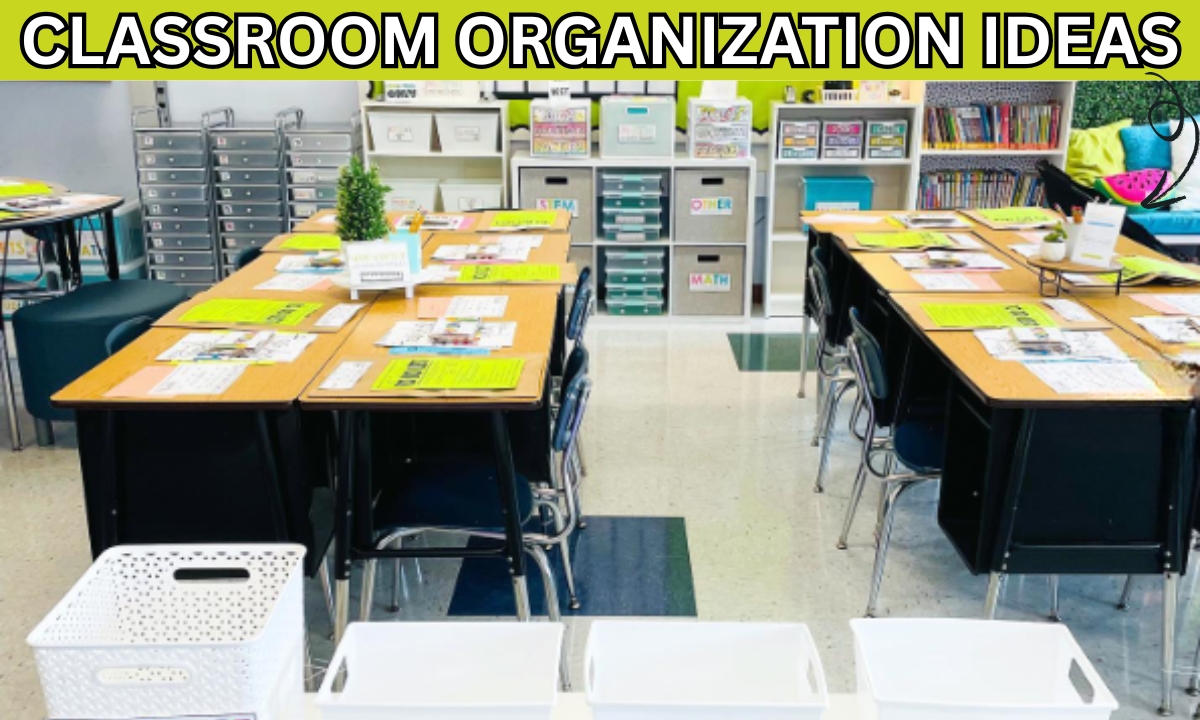
A well-organized classroom isn’t just neat it’s the foundation for a thriving learning environment.
For elementary teachers, the right organizational strategies can save precious time, ease daily stress, and create a space where students feel focused and inspired.
From clever storage solutions to ideas that spark creativity, getting the classroom in order has never been more rewarding.
This article brings you 22 creative and practical classroom organization ideas tailored for elementary settings.
Contents
- 1 Classroom Library Setup
- 2 Elementary Classroom Organization
- 2.1 Cozy Corner
- 2.2 Station Drawers
- 2.3 Neon File Carts
- 2.4 Color-Coded Caddies
- 2.5 Table Caddies
- 2.6 Supply Cart
- 2.7 iPad Storage
- 2.8 Craft Shelf
- 2.9 Cabinet Zones
- 2.10 Color Coded Bins
- 2.11 Book Bins
- 2.12 Desktop Crate
- 2.13 Monthly Bins
- 2.14 Assessment Crate
- 2.15 Clear Supply Bins
- 2.16 Genre Library
- 2.17 Labeled Baskets
- 2.18 Wall Bins
- 2.19 Grading Folders
- 2.20 Reading Files
- 2.21 Labeled Book Bins
- 2.22 Catch-Up Crates
Classroom Library Setup
Create an inviting reading space with bookshelves organized by genre and accented with colorful labels for quick browsing.
Add cozy touches like a plush reading rug and vibrant wall décor, such as a “#READ” sign, to make the area welcoming.

Include a vivid genre chart to reinforce literary categories and encourage exploration.
With soft lighting and thoughtfully labeled rows, this setup not only enhances organization but also fosters a love for reading.
Elementary Classroom Organization
Cozy Corner
Create a cozy reading nook with a pastel aesthetic.
A pink armchair paired with colorful pillows and a “WELCOME” cushion makes this space inviting for students to relax or reset.
Place a lavender locker nearby for a pop of charm and use soft lighting to improve the ambiance.
Add a tiered cart with labeled drawers to organize supplies effectively.

Station Drawers
Simplify math rotations with a wood-framed drawer system.
Each plastic bin is labeled from Math Station 1 to 6, using bright pastel fonts that are easy for students to recognize.
This setup promotes smooth transitions, keeps materials separated, and encourages independence during activities.
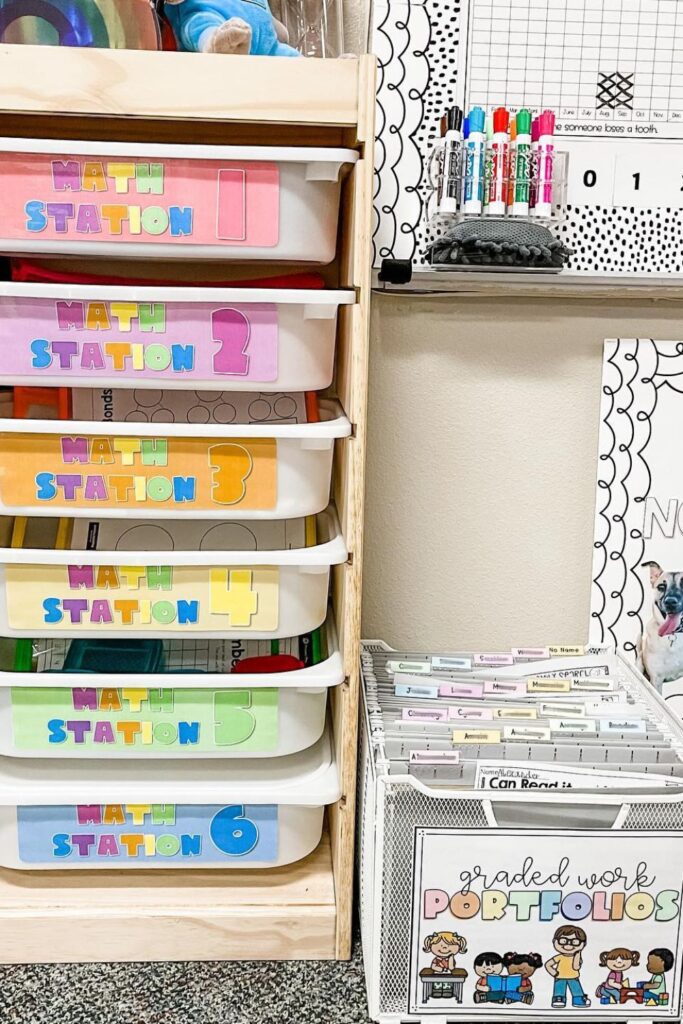
Neon File Carts
Boost organization with dual rainbow-colored drawer towers.
Dedicate one set to unit-based drawers and the other to weekday or task management.
Labels like “Need to Grade” and “Important Papers” make day-to-day work effortless for teachers.
Students also benefit from defined classwork categories, reducing misplaced assignments.
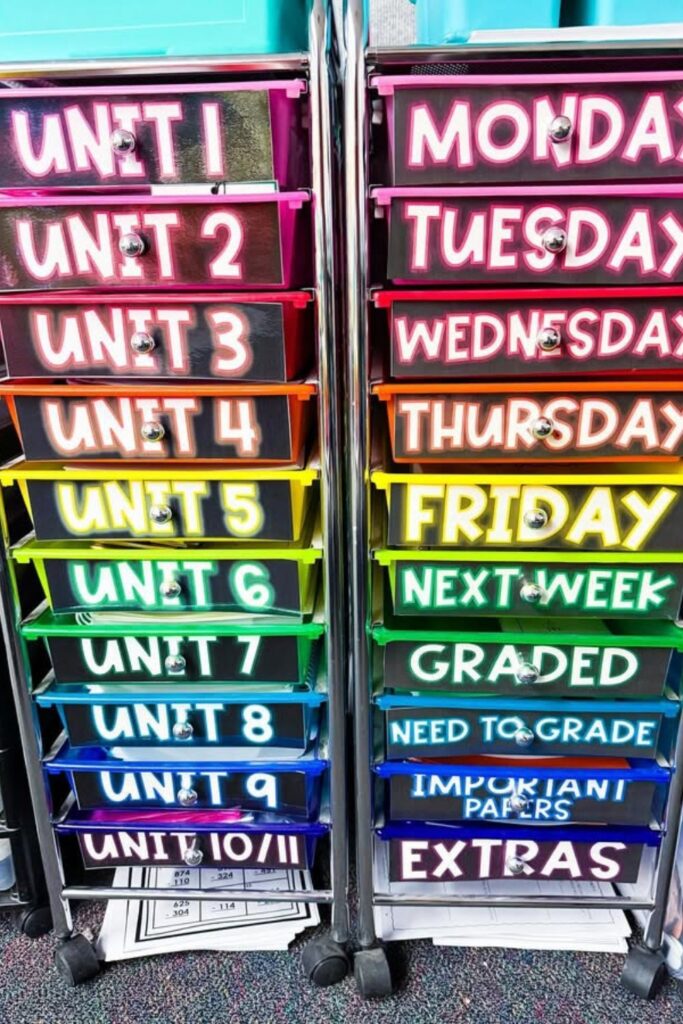
Color-Coded Caddies
Equip each group station with its own color-coded caddy filled with essentials like glue, scissors, and markers.
Store these on three-tier plastic shelves to keep everything neat and accessible.
The rainbow layout fosters organization, limits distractions, and helps students quickly locate and return their tools.
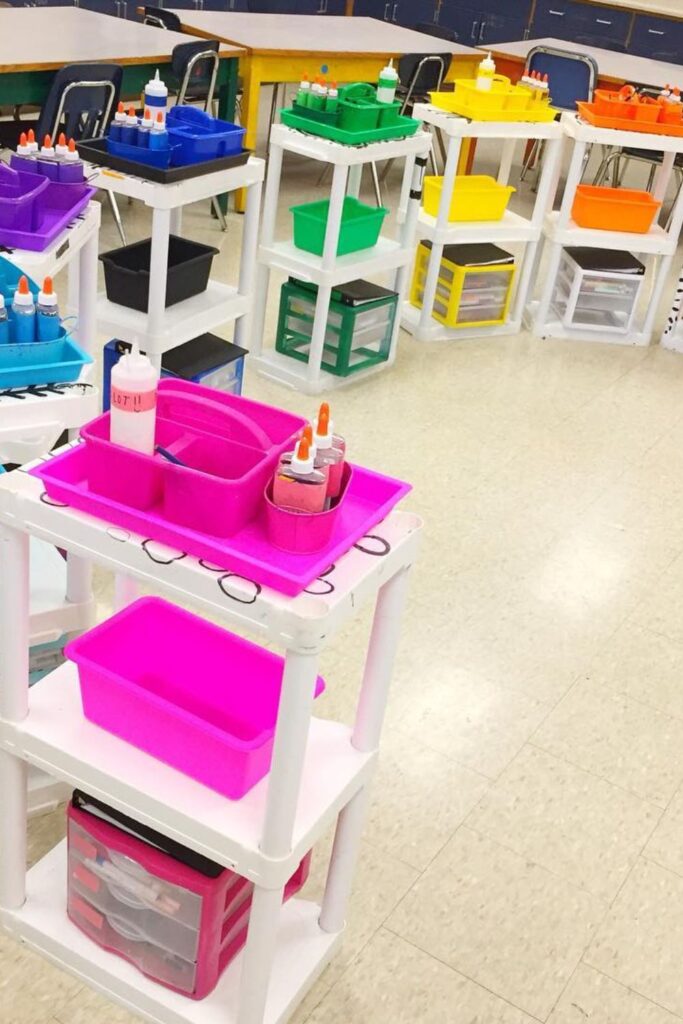
Table Caddies
Keep supplies within reach using bright pink table caddies, filled with scissors, crayons, glue sticks, and pencils.
Clearly labeled with signs like “TABLE 1,” these caddies ensure students easily identify their group’s tools.
This setup reduces classroom movement and encourages shared responsibility for organizing and returning materials after use.
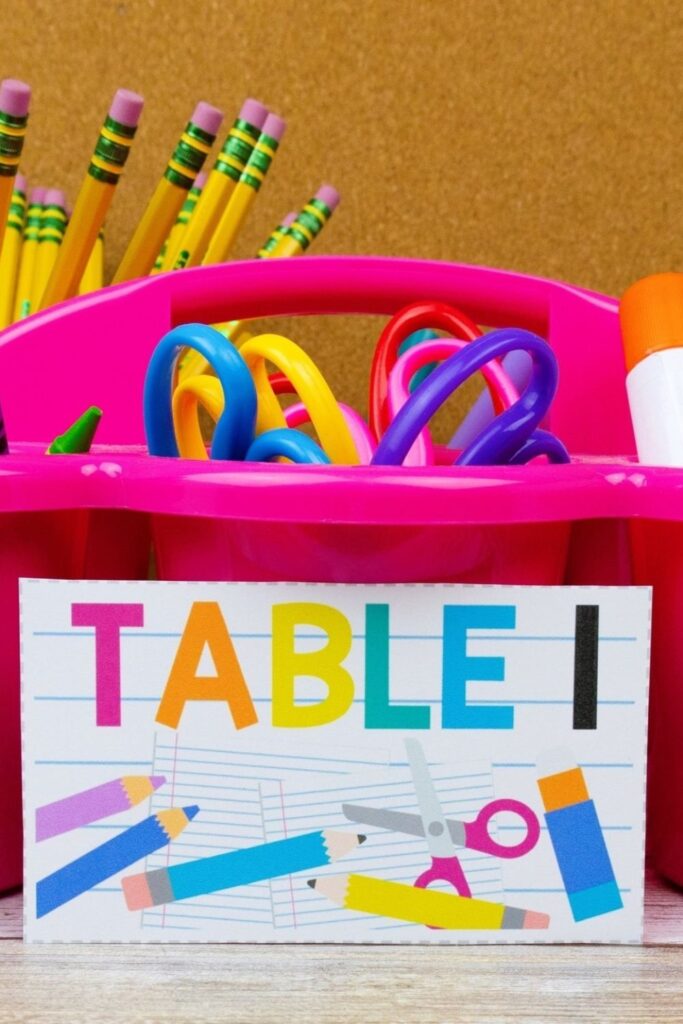
Supply Cart
Streamline access with a rolling blue utility cart featuring open shelving.
Fill colored bins on each shelf with writing tools, paint, and crafting supplies, and use side pockets for paper and essentials.
This mobile design allows teachers to bring materials straight to students, creating efficient, flexible learning zones for art or project-based tasks.
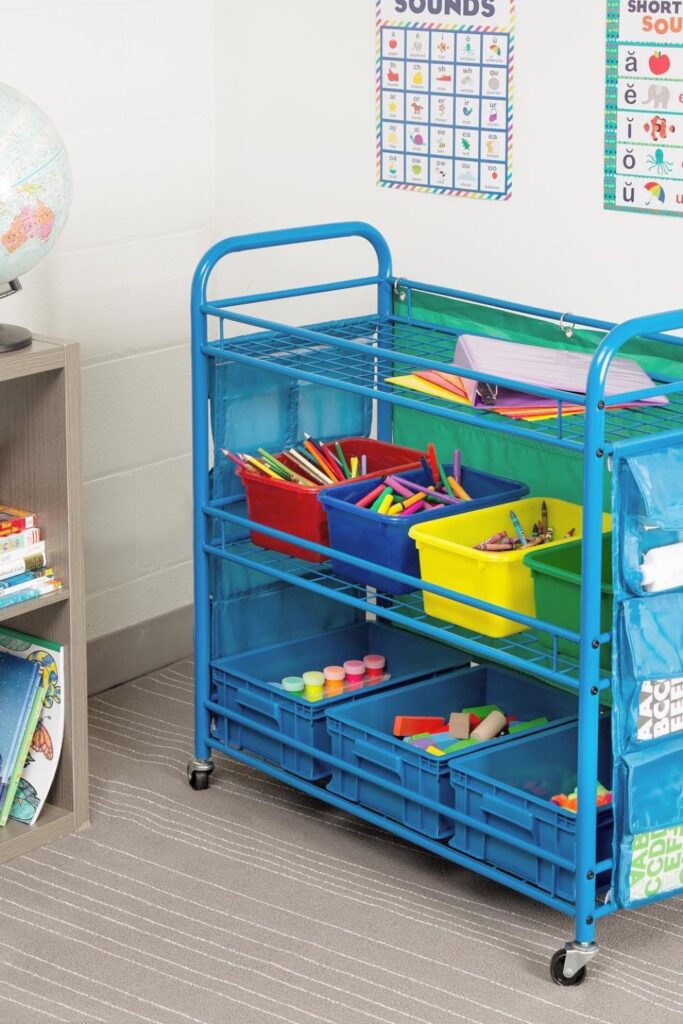
iPad Storage
Simplify tech use with color-coded charging stations.
Each iPad is paired with a matching tab and cord, making it easy for students to find their assigned device.
This system keeps cords untangled, protects devices, and supports a consistent charging routine while reducing classroom confusion during tech time.
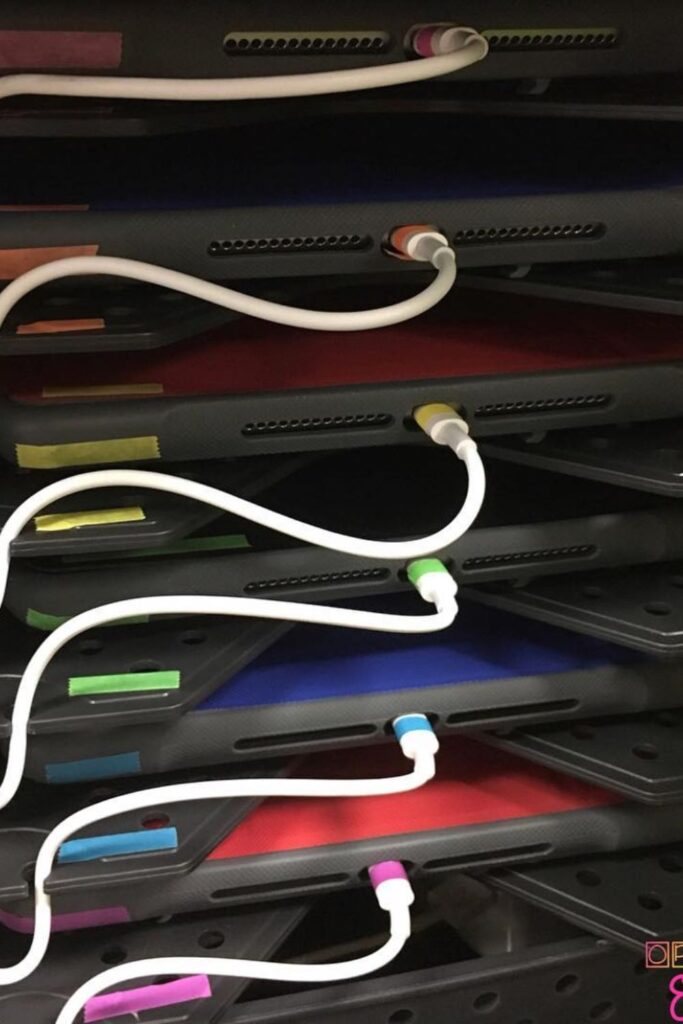
Craft Shelf
Set up a creative space with open shelving and clear containers.
Store and sort items like markers, crayons, beads, and glue sticks in stackable bins.
Display books upright in labeled magazine holders to keep everything neat.
This organized setup boosts accessibility, fostering students’ independence and inspiring creativity.
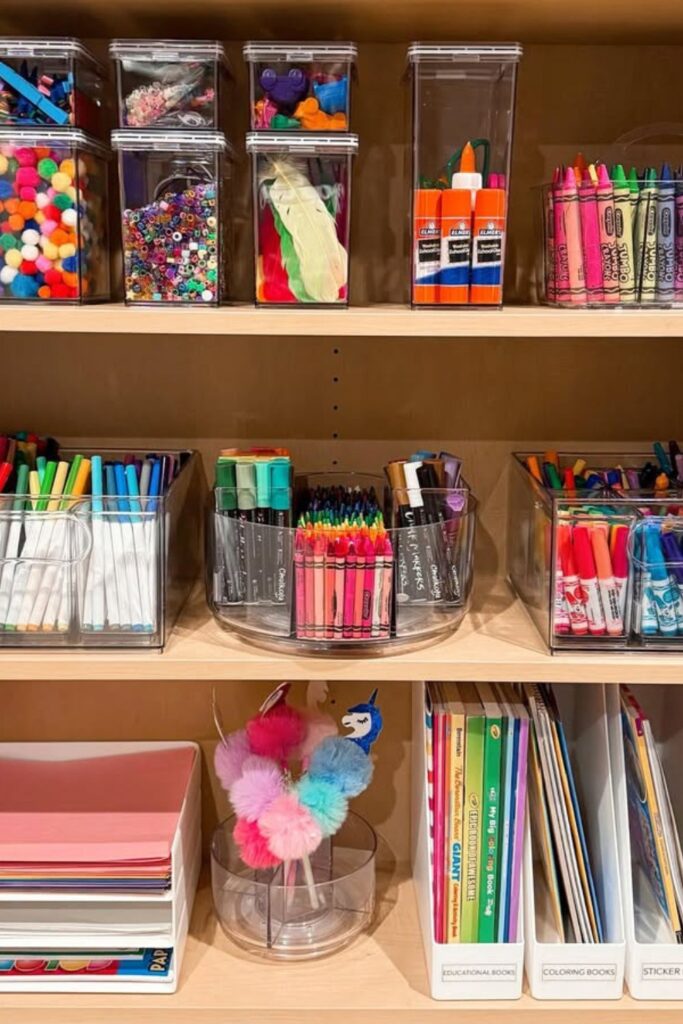
Cabinet Zones
Organize the storage cabinet with clear labeled bins for foam blocks, sensory kits, STEM supplies, and learning tools.
Each item has a designated container, making retrieval and return seamless for teachers and students alike.
Grouping similar items together maximizes shelf space, fosters independence, and keeps hands-on activities running smoothly.
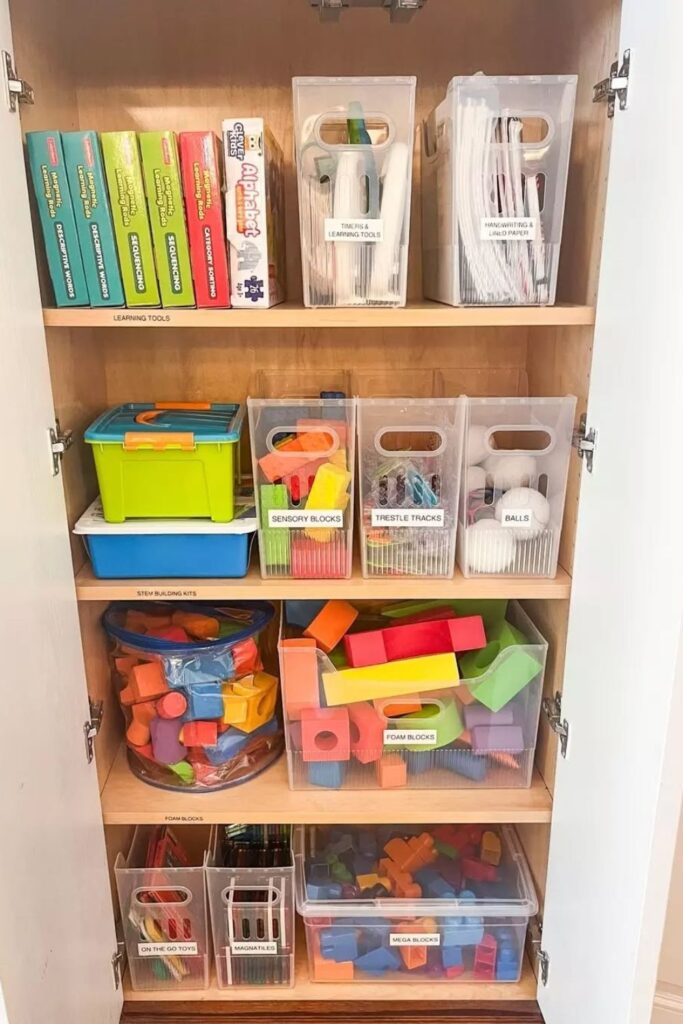
Color Coded Bins
Transform organization with a compact shelf featuring numbered plastic bins in a vibrant spectrum from red to teal.
Labeled 1 to 12, these bins simplify managing materials, assignments, or learning stations while adding visual structure.
Pair the system with a tall weekly drawer unit and additional baskets below for extra storage.
This dynamic setup creates a central hub that streamlines daily routines and keeps the classroom running smoothly.
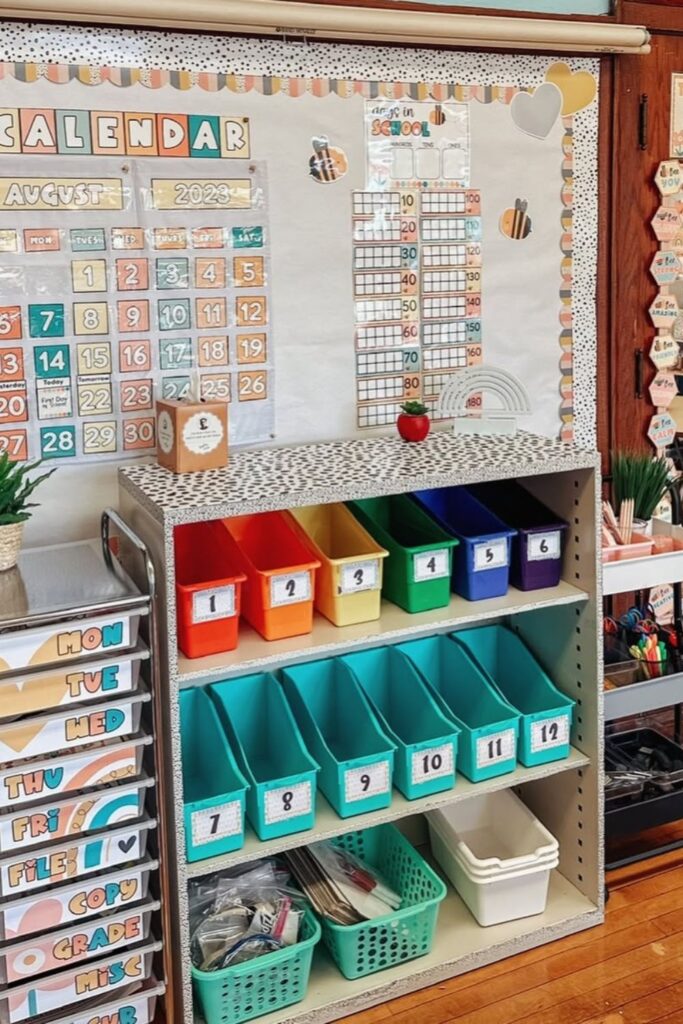
Book Bins
Create quick access to notebooks with vibrant color-coded bins labeled by subject, like English and Math.
Upright storage saves time and keeps materials organized.
This visually structured setup minimizes confusion and improves transition efficiency.
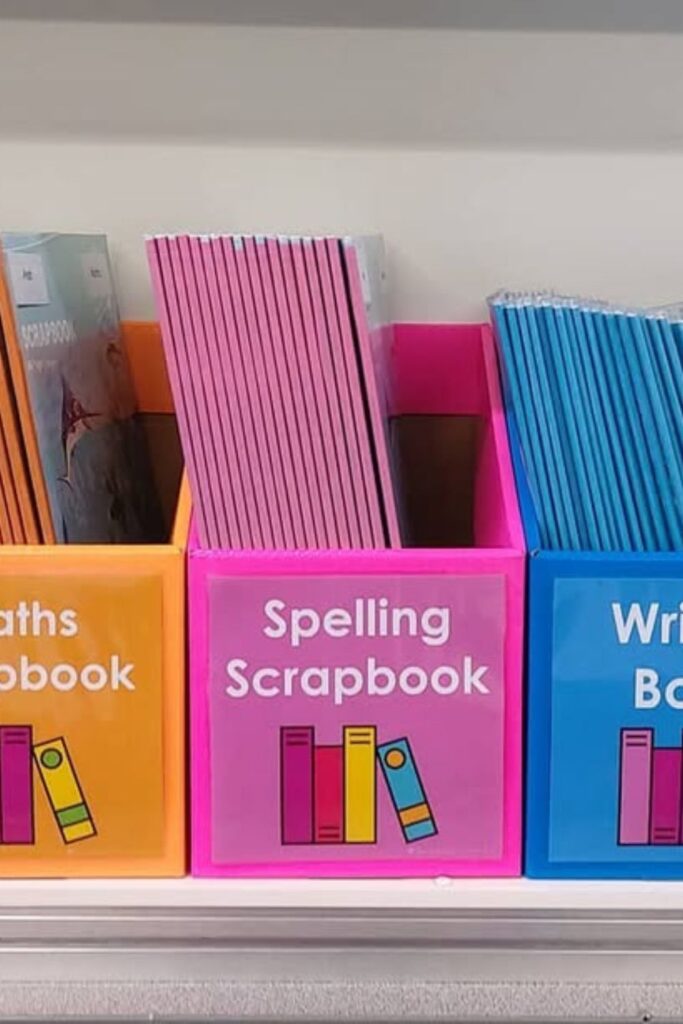
Desktop Crate
Add style and function with a rustic wooden organizer that separates supplies like glue sticks, scissors, and markers into labeled compartments.
With colorful visuals for younger learners.
This system promotes independence while maintaining a tidy, accessible workspace.
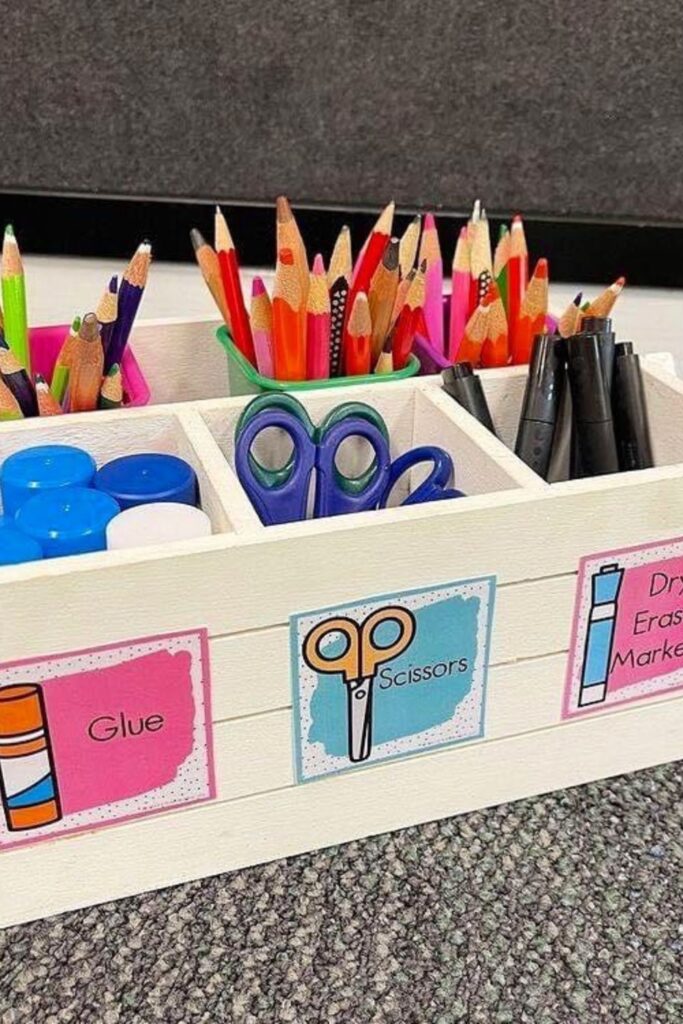
Monthly Bins
Keep the seasonal supplies and décor flawlessly sorted with clear storage bins labeled by month.
Each bin sports a bold graphic representing the month, making them easy to spot even for young learners.
This organized approach simplifies lesson prep and ensures holiday materials are always ready and at your fingertips.
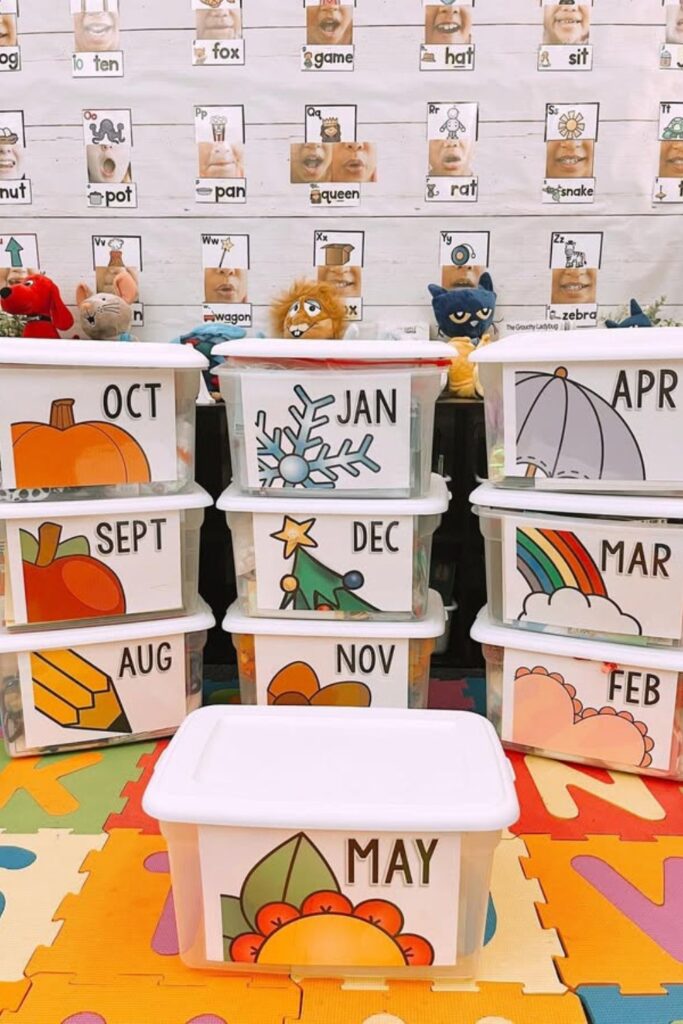
Assessment Crate
Stay on top of student progress with a sleek black-and-pink crate for organizing assessments alphabetically.
Labeled folders make it simple to find and file important documents, keeping records neat, secure, and accessible.
This setup streamlines conferences and supports effective data-driven instruction.

Clear Supply Bins
Say goodbye to clutter with transparent drawer units labeled in bold white text.
Easily store pencils, crayons, glue sticks, and more, while keeping everything visible for quick restocking.
These bins create a clean, functional workspace that fosters focus and efficiency.

Genre Library
Transform the reading corner with bookshelves organized by genre and color-coded rows for easy browsing.
Add a vibrant wall chart and bold accents like a “#READ” sign to entice students.
This inviting space encourages independent reading and helps kids explore new book categories confidently.
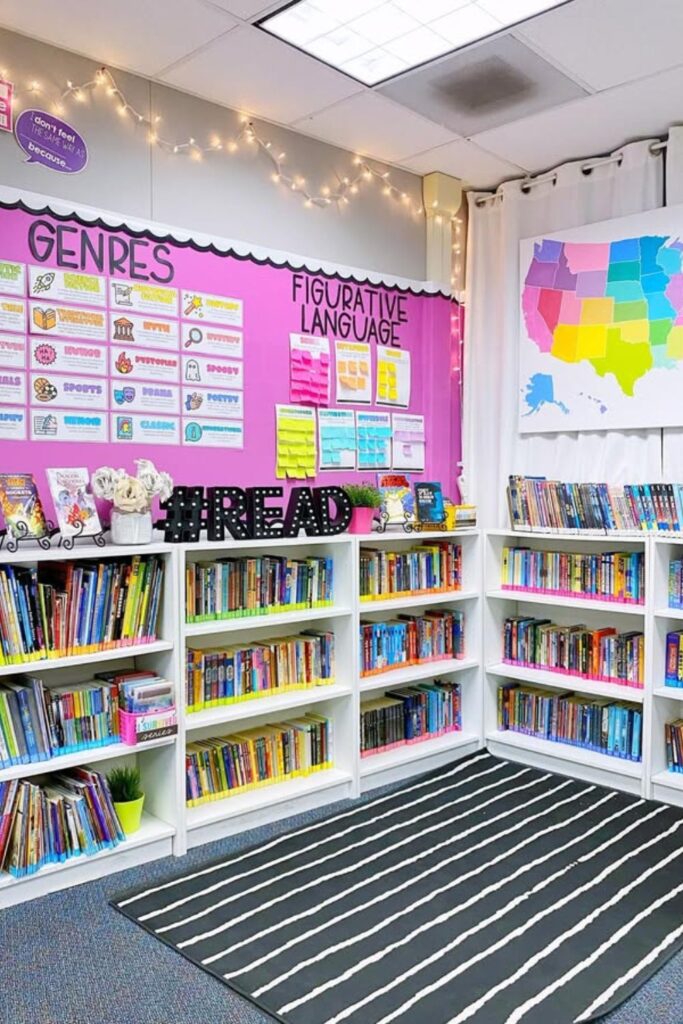
Labeled Baskets
Organize essentials like pencils, paper, crayons, and paint with woven bins labeled with playful icons and bold text.
The mix of symbols and words helps young learners find materials quickly.
Placed under neutral cabinetry, these baskets bring a cozy, home-like feel while staying practical for daily classroom needs.
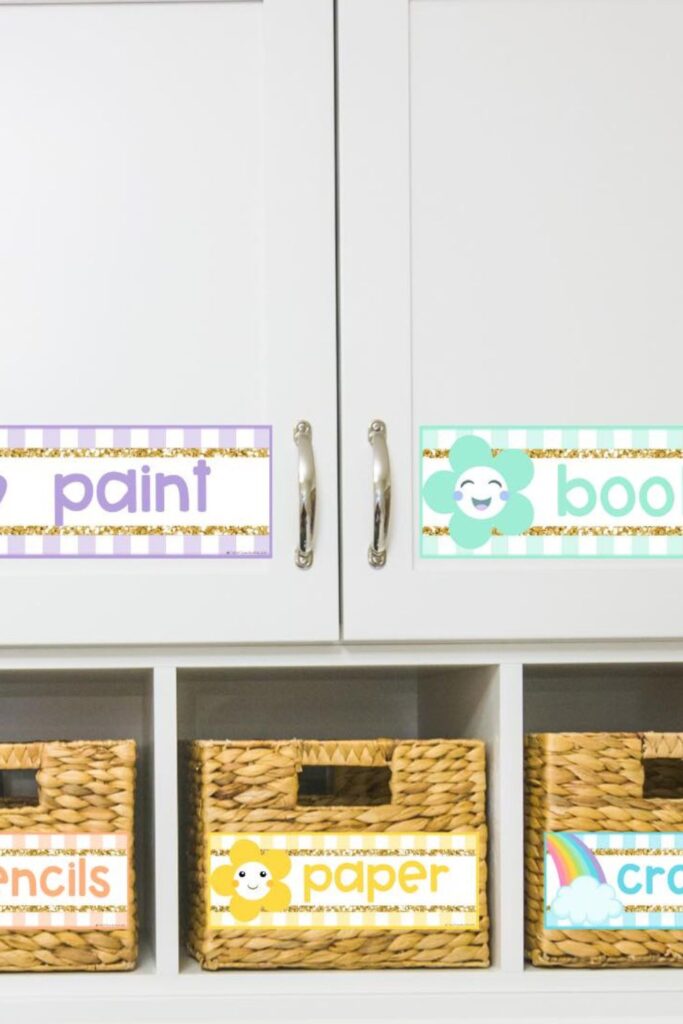
Wall Bins
Keep monthly items tidy with clear seasonal bins arranged on wall shelves for August through May.
Oversized labels combining text and artwork make materials easy to locate.
Positioned above cubbies, this setup keeps floors clear and ensures smooth rotation with each upcoming month.
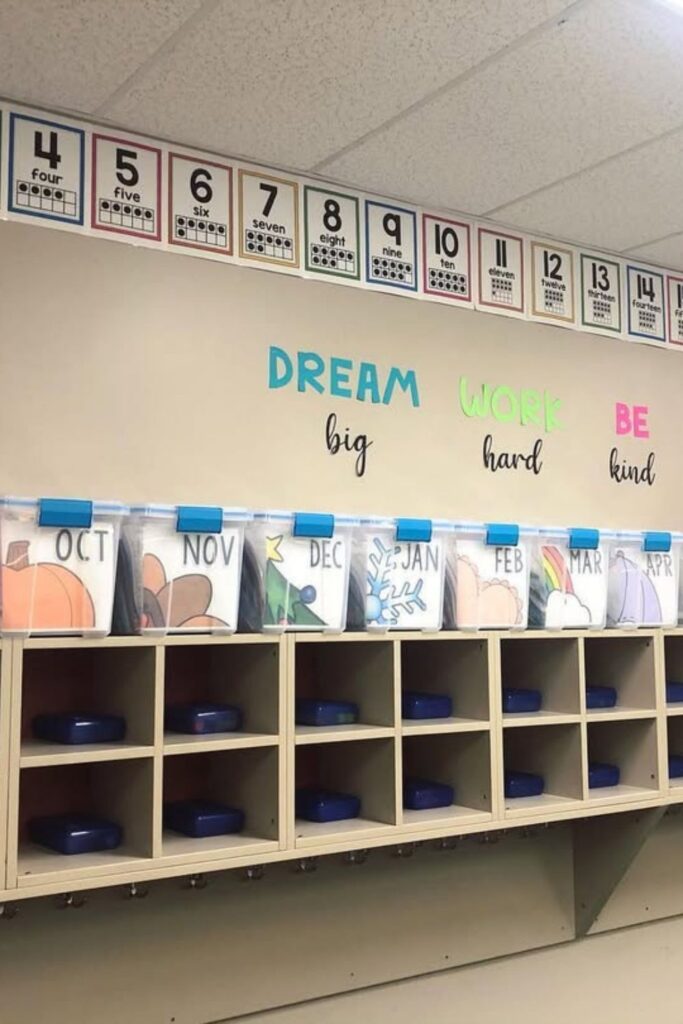
Grading Folders
Simplify grading with bright pink hanging folders sorted by task like “marked” or “to distribute.”
Labeled tabs make tracking assignments effortless, streamlining the entire workflow and preventing misfiled papers.
Teachers can stay organized and focused with this functional system.

Reading Files
Store guided reading materials in polka-dotted magazine holders marked by theme, from “Sharks” to “Fireflies.”
Whimsical icons make swapping books easy while creating a cheerful, visually cohesive setup.
This inviting system sparks excitement for exploring real-world topics in class.
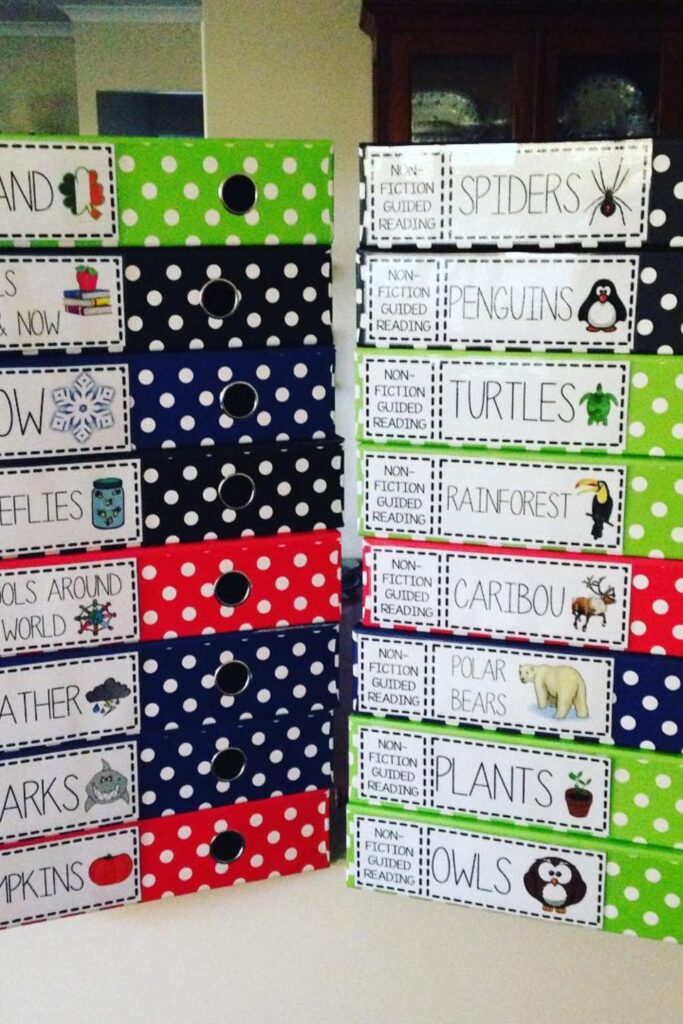
Labeled Book Bins
Organize independent reading with white bins labeled “Book Bin 13–22.”
The bold leopard-patterned labels add flair while helping students track genres or reading levels.
This system supports self-directed browsing, letting students take charge of selecting and returning books.
A tidy, engaging space that fosters responsibility and a love for reading.
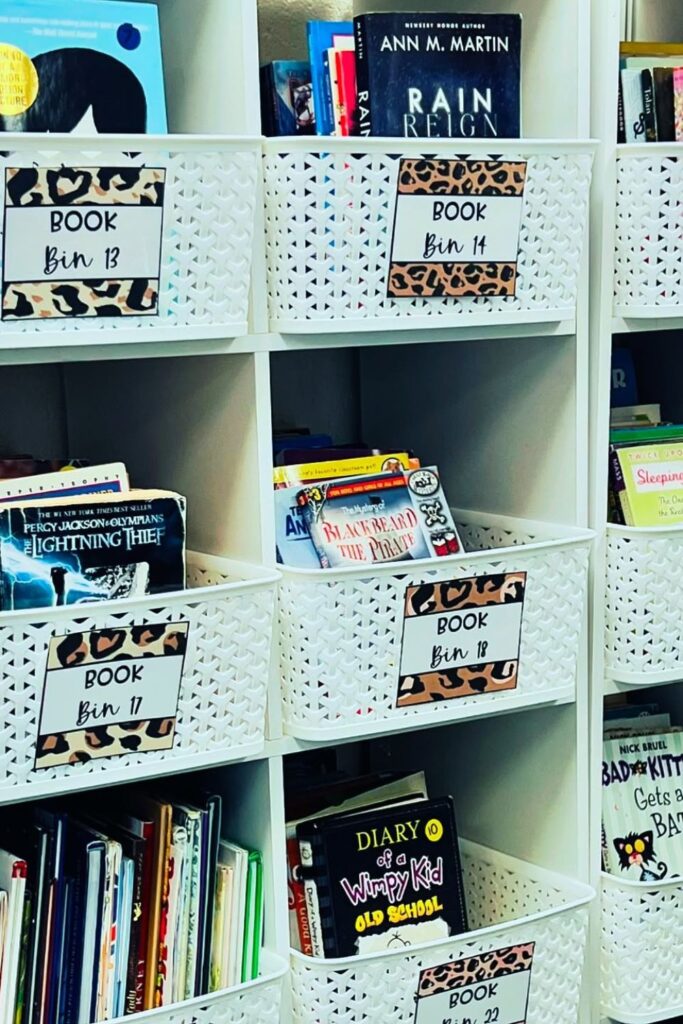
Catch-Up Crates
Streamline classroom routines with bright plastic crates labeled “Extra Copies,” “Were You Absent” and “Finished Early”.
These clearly marked crates give students access to missed work, extra practice, or bonus materials without interrupting class flow.
This setup builds student independence, reduces repetitive questions, and establishes a consistent routine for early finishers and those catching up.
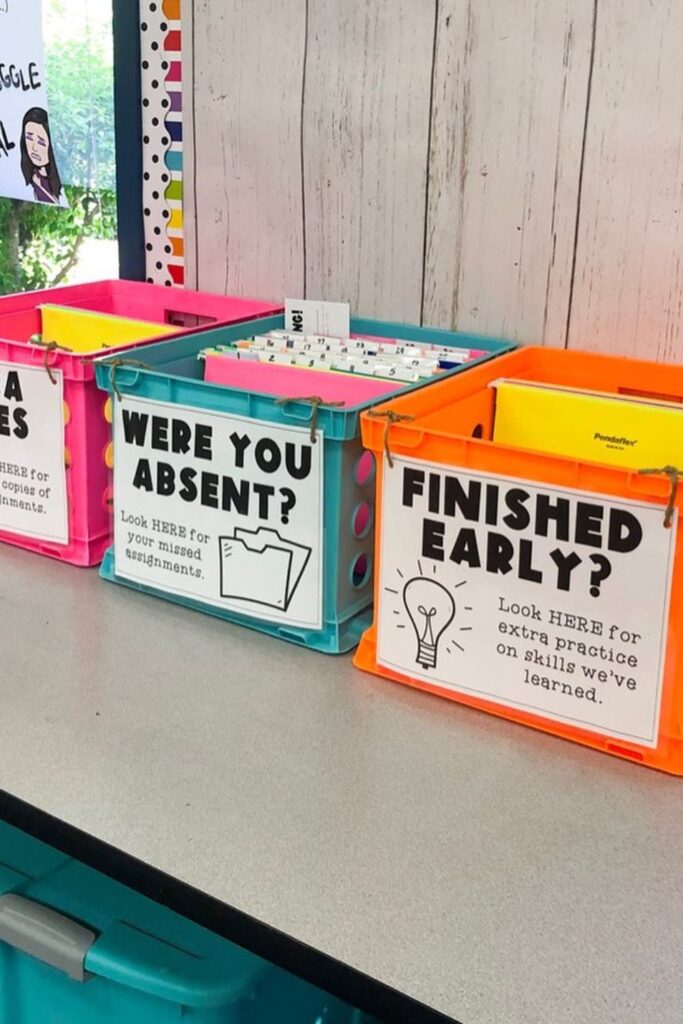

Fasial is the founder of the Fizzy Flare. He has been a passionate blogger since 2021. He ran three different websites in the past few years. Now he is focusing on Fizzy Flare to build an audience and help them organize their life.
